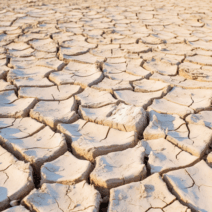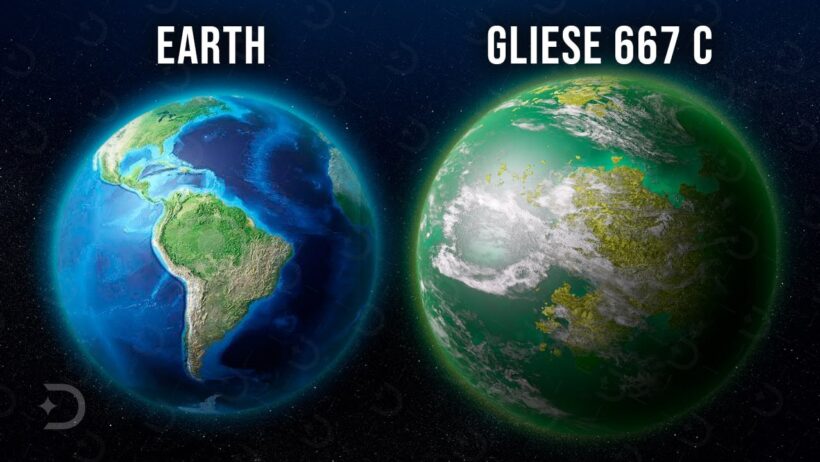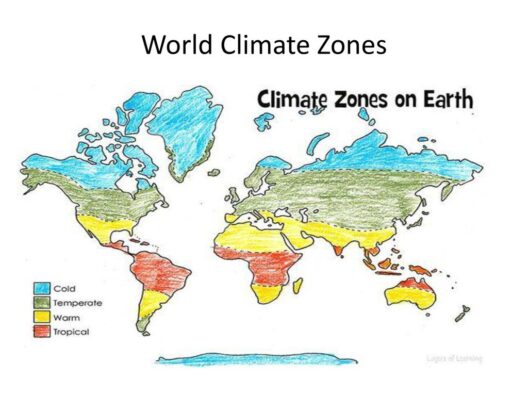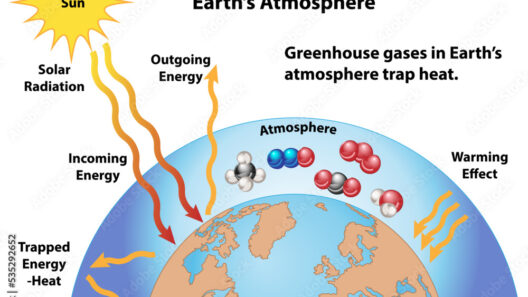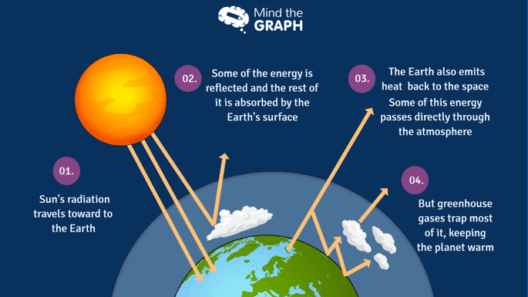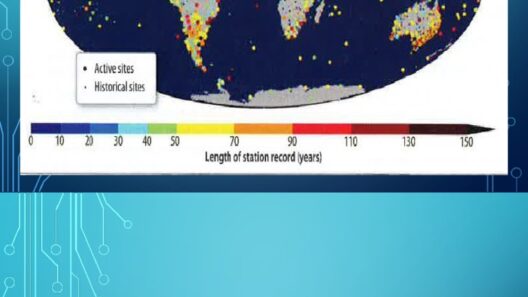Imagining a world devoid of the greenhouse effect requires a departure from the familiar warmth that our planet currently offers. This phenomenon is vital for maintaining temperatures conducive to life. Without it, Earth transforms into a considerably less hospitable realm, marked by stark contrasts in climate and ecology. Let’s embark on an exploration of this hypothetical reality.
Understanding the Greenhouse Effect
The greenhouse effect is a natural process wherein certain gases, known as greenhouse gases, trap heat in the atmosphere, preventing it from escaping into space. This insulation effect is primarily facilitated by gases such as carbon dioxide, methane, and nitrous oxide, allowing for a stable climate where diverse ecosystems can flourish. With a global temperature averaging about 59°F (15°C), Earth is often deemed a “Goldilocks planet” — not too hot and not too cold, fostering conditions ripe for various forms of life.
However, if this protective layer were absent, the consequences would be breathtakingly severe. Earth’s average temperature could plunge to an uninhabitable -0.4°F (-18°C). Such a climate would dramatically reshape the planet, marking a shift into an unforgiving environment.
Cold Realities of a Lifeless World
The absence of greenhouse gases would result in brutal cold across the globe. Ice sheets would expand, with polar regions resembling vast, desolate tundras, devoid of the vibrant life forms that currently inhabit them. This ice penetration would extend further southward, enveloping regions typically bustling with biodiversity, thereby manifesting a stark transformation in the biome distribution across the planet.
Marine life, particularly in polar regions, which thrives in the delicate balances of current oceanic temperatures, would face catastrophic changes. Cold water species may find their habitat expanded but would grapple with a lack of essential ecosystems provided by warmer waters. Coral reefs, already threatened by climate change, would cease to exist, replaced by barren ocean floors that reveal an ecological wasteland.
Life on Land: A Unique Challenge
With the cataclysmic temperature drop, terrestrial ecosystems would face insurmountable challenges. Forests, once vibrant with life, would become stark silhouettes against the horizon, their lush canopies replaced by a muted palette of browns and grays. The flora and fauna that we treasure, from majestic redwoods to industrious bees, would find survival increasingly precarious. Plant species adapted to warm climates would struggle to endure in a frigid domain, leading to a potential mass extinction event.
Animals would also have to evolve rapidly or face extinction, as their food sources dwindle. Herbivores, now unable to sustain themselves on frozen vegetation, would become increasingly rare. Predators, reliant on these herbivores for food, would similarly decline in numbers. The intricate web of life we now take for granted would unravel, resulting in a ghostly echo of ecosystems that once thrived.
Humanity’s Place in this Cool Continuum
If we cast our gaze towards humanity, the implications become even more profound. Agriculture, a cornerstone of civilization, would face insurmountable obstacles in a world marked by perpetual winter. Crops would fail, leading to food shortages and mass starvation. The agricultural belt — once thriving areas like the Midwest United States and the Pampas of Argentina — would turn into desolate expanses where little can prosper.
In this cooler, less hospitable world, the notion of community would also undergo a drastic transformation. The migration patterns of individuals seeking temperate climates would lead to increased conflicts over resources, as warm pockets of habitation become battlegrounds for survival. Society as we know it would fray at the seams, giving way to a scramble for sustenance in a harsh, unyielding environment.
Technological Challenges and Adaptation
Adapting to a cooler Earth would require innovative technological advancements to combat the pervasive chill. Humanity would likely invest heavily in developing climate-controlled environments to cultivate food and sustain life. However, such technological solutions could be unsustainable, requiring immense energy resources, further exacerbating environmental issues.
The quest for alternative energy sources could emerge as a last refuge, yet in a world increasingly devoid of natural habitats, the implications of such advancement could lead to unintended consequences. The cycle of technology versus nature, already in play, would intensify as humanity struggles to counteract its harsh surroundings.
Conclusion: Embracing the Present
The implications of a world without the greenhouse effect serve as a vivid reminder of the intricate balance that sustains life. While the topic may incite fear and intrigue, it is essential to recognize that the greenhouse effect, when exacerbated by human actions, poses its own set of challenges. Understanding the ramifications of both extremes compels us to appreciate the delicate equilibrium required to preserve our planet.
As we navigate this complex interplay of factors, a commitment to sustainability and environmental stewardship emerges as the only sensible path forward. By cherishing and protecting the world’s natural systems, we not only safeguard our future but also allow the rich tapestry of life to flourish — a testament to the vibrant planet Earth has the potential to remain.
